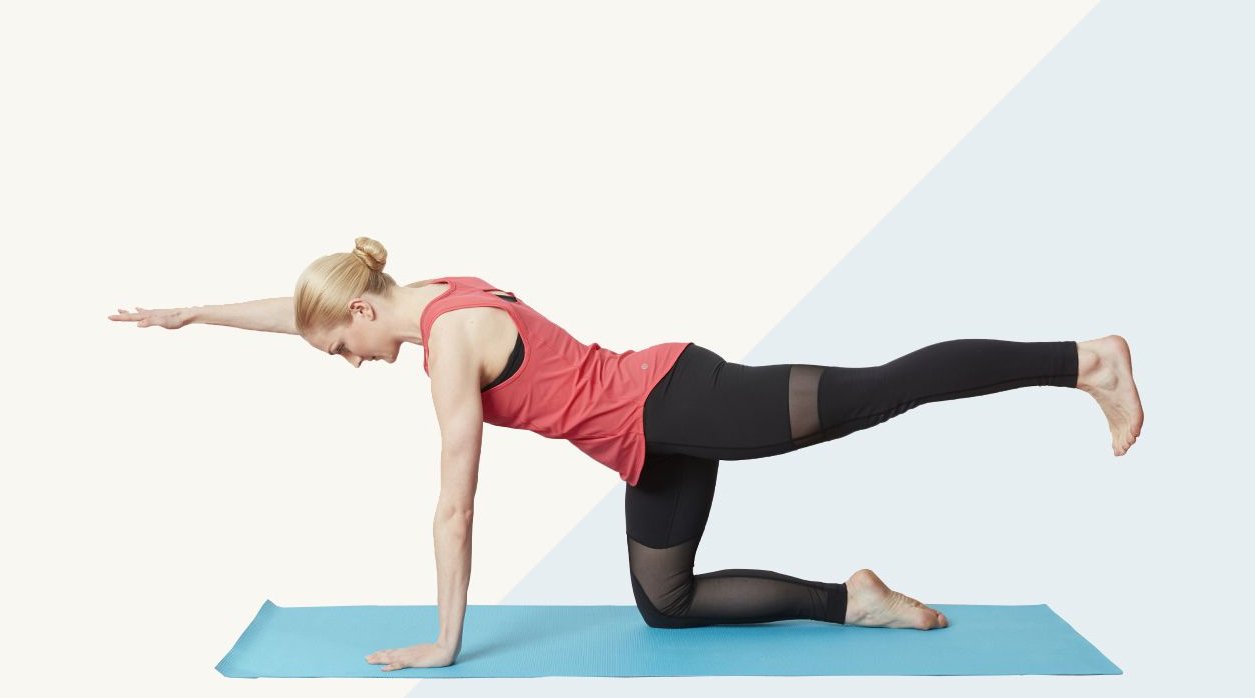Low-back pain is a common issue that many people face, whether due to long hours of sitting, poor posture, or lack of exercise. However, there are simple body-weight exercises that can help strengthen your back and core, alleviating and preventing low-back pain. Here are four effective exercises: Plank, Side Plank, Glute Bridge, and Bird Dog. Let’s dive into each one and learn how to perform them properly.
1. Plank

The plank is a fundamental core exercise that strengthens the entire body, especially the core muscles that support the lower back.
How to Perform a Plank:
- Start Position: Begin on all fours, with your hands directly under your shoulders and your knees under your hips.
- Extend Your Legs: Step your feet back, one at a time, to extend your legs fully. Your body should form a straight line from your head to your heels.
- Engage Your Core: Tighten your abdominal muscles, glutes, and thighs. This engagement helps support your lower back.
- Hold the Position: Keep your body straight and hold this position for 20-30 seconds to start. As you get stronger, aim to hold for up to a minute or more.
- Breathing: Remember to breathe steadily throughout the exercise.
Tips:
- Avoid letting your hips sag or rise too high.
- Keep your neck in a neutral position by looking at a spot on the floor just in front of your hands.
2. Side Plank

The side plank is a variation of the traditional plank that targets the obliques and helps improve stability and balance.
How to Perform a Side Plank:
- Start Position: Lie on your side with your legs extended and stacked on top of each other. Place your bottom elbow directly under your shoulder.
- Lift Your Hips: Engage your core and lift your hips off the ground so that your body forms a straight line from head to feet.
- Hold the Position: Keep your hips lifted and hold this position for 20-30 seconds. As you become more comfortable, try to hold for up to a minute.
- Breathing: Maintain steady breathing throughout the exercise.
Tips:
- Keep your body in a straight line; avoid letting your hips drop or rise too high.
- If this is too challenging, you can modify it by bending your bottom knee and keeping it on the ground for support.
3. Glute Bridge

The glute bridge targets the glutes, hamstrings, and lower back, helping to build strength and stability in the lower back region.
How to Perform a Glute Bridge:
- Start Position: Lie on your back with your knees bent and feet flat on the floor, hip-width apart. Place your arms by your sides, palms facing down.
- Lift Your Hips: Press through your heels and lift your hips toward the ceiling. Your body should form a straight line from your shoulders to your knees.
- Engage Your Glutes: At the top of the movement, squeeze your glutes and hold for a couple of seconds.
- Lower Your Hips: Slowly lower your hips back to the starting position without letting them touch the ground.
- Repetitions: Perform 10-15 repetitions, gradually increasing the number as you get stronger.
Tips:
- Avoid arching your lower back. Focus on lifting with your glutes and hamstrings.
- Keep your feet flat on the ground and your knees in line with your hips.
4. Bird Dog

The bird dog exercise improves balance and stability while strengthening the core, lower back, and glutes.
How to Perform a Bird Dog:
- Start Position: Begin on all fours, with your hands directly under your shoulders and your knees under your hips.
- Extend Opposite Arm and Leg: Simultaneously extend your right arm forward and your left leg backward, forming a straight line from your fingertips to your toes.
- Engage Your Core: Tighten your core muscles to keep your back flat and hips level.
- Hold the Position: Hold this extended position for a few seconds, then return to the starting position.
- Alternate Sides: Repeat on the opposite side, extending your left arm and right leg.
- Repetitions: Perform 10-15 repetitions on each side.
Tips:
- Keep your movements slow and controlled to maintain balance.
- Avoid letting your lower back sag or your hips twist.
Conclusion
Incorporating these four body-weight exercises into your routine can help ward off low-back pain by strengthening the core, glutes, and lower back muscles. Remember to perform each exercise with proper form to maximize their effectiveness and reduce the risk of injury. Start with shorter hold times and fewer repetitions, gradually increasing as you build strength and stability. With consistency and attention to form, you’ll be on your way to a stronger, pain-free back.






